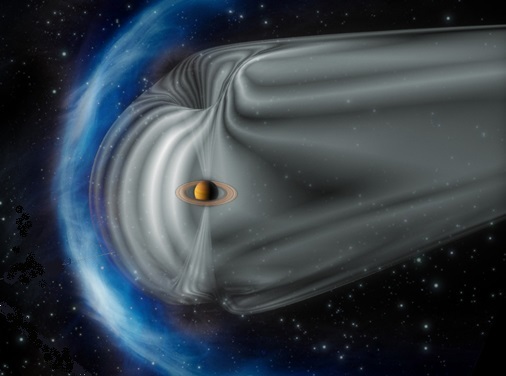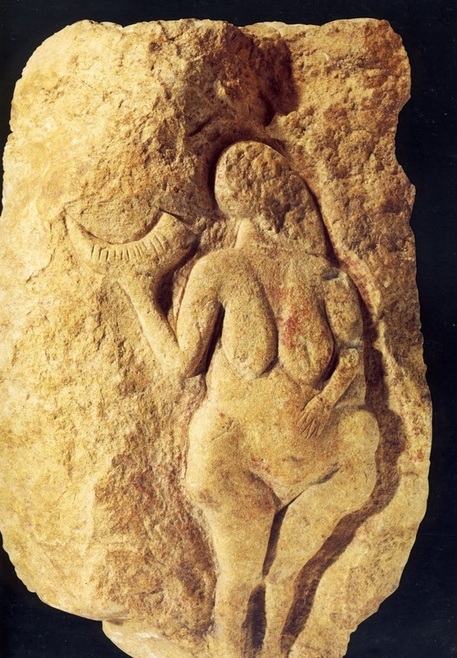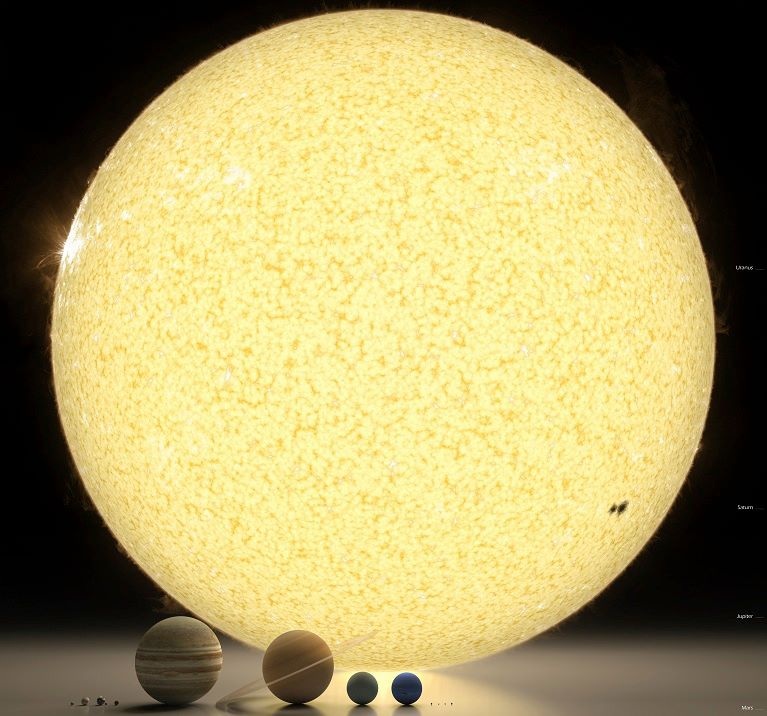Introduction
During the last 10 million years (and perhaps beginning earlier) "Flare-Star" Saturn began scavenging lost planet-satellites and sibling dwarf stars, all in orbits relatively close to Sol. In those conditions, the probability of Saturn capturing a planet-satellite into orbit around its equator was virtually zero. Instead, scavenged sibling stars and satellite-planets wound up in suprapolar and subpolar positions, respectively, the only locations dynamically stable enough to balance gravitational attraction against electrical repulsion (without requiring a radical change in orbital speed). #(Cook, Chapter 2)
When Saturn made an appearance, it was seen for hundreds of years before disappearing again. #(Cook, Appendix B) The vertical stack of sibling dwarf stars and dependent planet-satellites was seen and recorded in the shapes of Paleolithic artifacts c. 2 million years ago; as carved reliefs in the Upper Paleolithic c. -30,000; and again by the hundreds of millions during the Neolithic, c. -7000 to -3000, when the 'Heavenly Parent' was much more frequently seen. #(Cook, Chapter 2)
The long periods between these appearances correspond neatly to the punctual nature of the archeological record, in that artefactual representations of these appearances disappear for thousands of years at a time and then suddenly begin again in prolific profusion. A notable example are the bulbous female 'goddess' figurines found in the millions on millions worldwide, representations of the dynamic Axial Alignment seen in the skies overhead during distinct phases and from different fields of view. Sibling dwarf stars Uranus, Neptune and Saturn formed a hooded head, pendulous breasts and portly torso, respectively (with many moons swirling like swarming bees around such a corpulent hive), while the more recently captured planets Mercury and Mars hung glowingly below in a stout appendage, all enclosed in a bright amber noctilucent coma. #(Cook, Chapter 10) Saturn seems to have eventually became a Sol System 'planet' because of the attractive forces exerted between it and sibling dwarf star Jupiter (then orbiting Sol subserviently somewhere close to 0.7 AU). Unlike ('oppositional' or 'contrary') electrical charges attract. #(Cook, Chapter 3) From an archaic orbital period of 27 million years, thro a reduction to an average of 4 to 5,000 years (after an initial encounter with Jupiter c. 10 million years ago), on each occasion Saturn would enter in from extrasolar (?) reaches of space with a large negative coulomb charge far greater than any of the planet-satellites of the Sol System. Sol System planet-satellites would thus have had a positive electrical coulomb charge in relation to Saturn. #(Cook, Appendix B) The protective plasmasphere of Saturn would isolate 'brown dwarf' Saturn from the sheer magnitude of the electrical properties of 'yellow dwarf' Sol. Yet with such a mismatched charge, Saturn "would attempt to dump electrons to the double layer of its plasmasphere, and to any nearby objects, including its own satellites. (This is the reason we see so many electrically scarred satellites.)" #(Cook, Chapter 3) Because of these conditions, planet Earth was not repelled (as would be the case with two or more bodies embodying equally negative charge) but was instead attracted to (its parent star,) Saturn, when electrical contact was made c. -10,900. #(Cook, Chapter 2) At that time Saturn's orbital period was again significantly reduced -- this time to something close to a single Solar year. #(Cook, Appendix B) This marks the inception of the cold wet darkness of the 'Younger Dryas' Era -- when Earth was scavenged by the Saturnian Polar Stack and a most dramatic phase of quantavolution ensued. |
|


